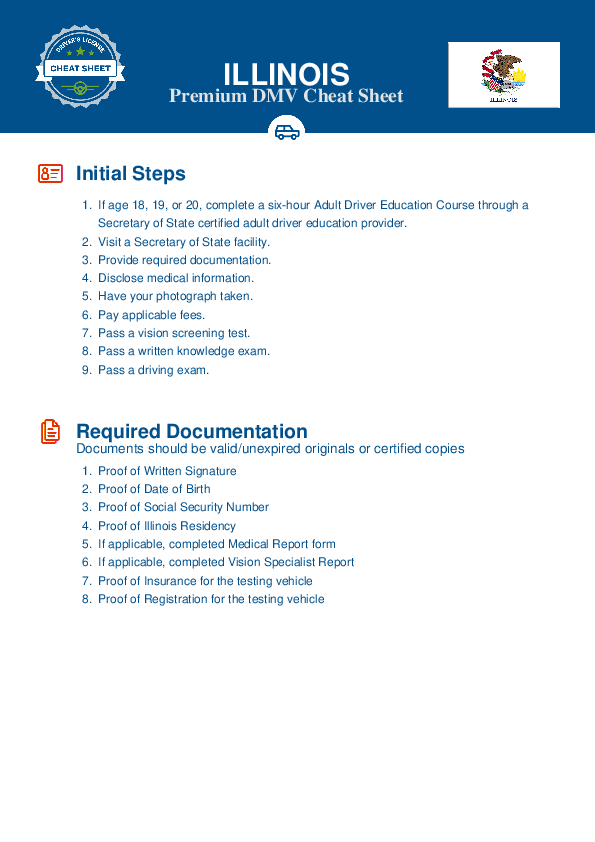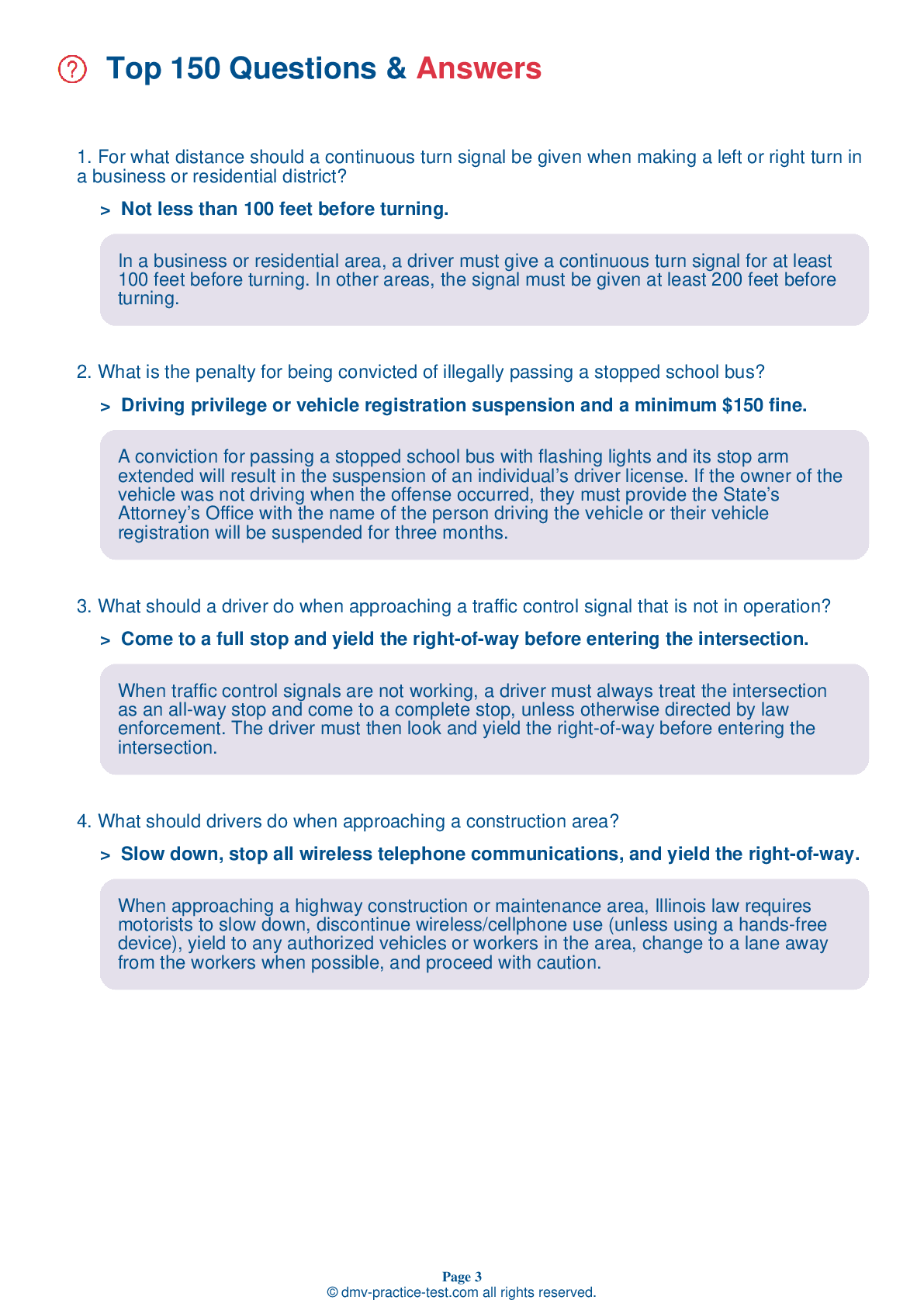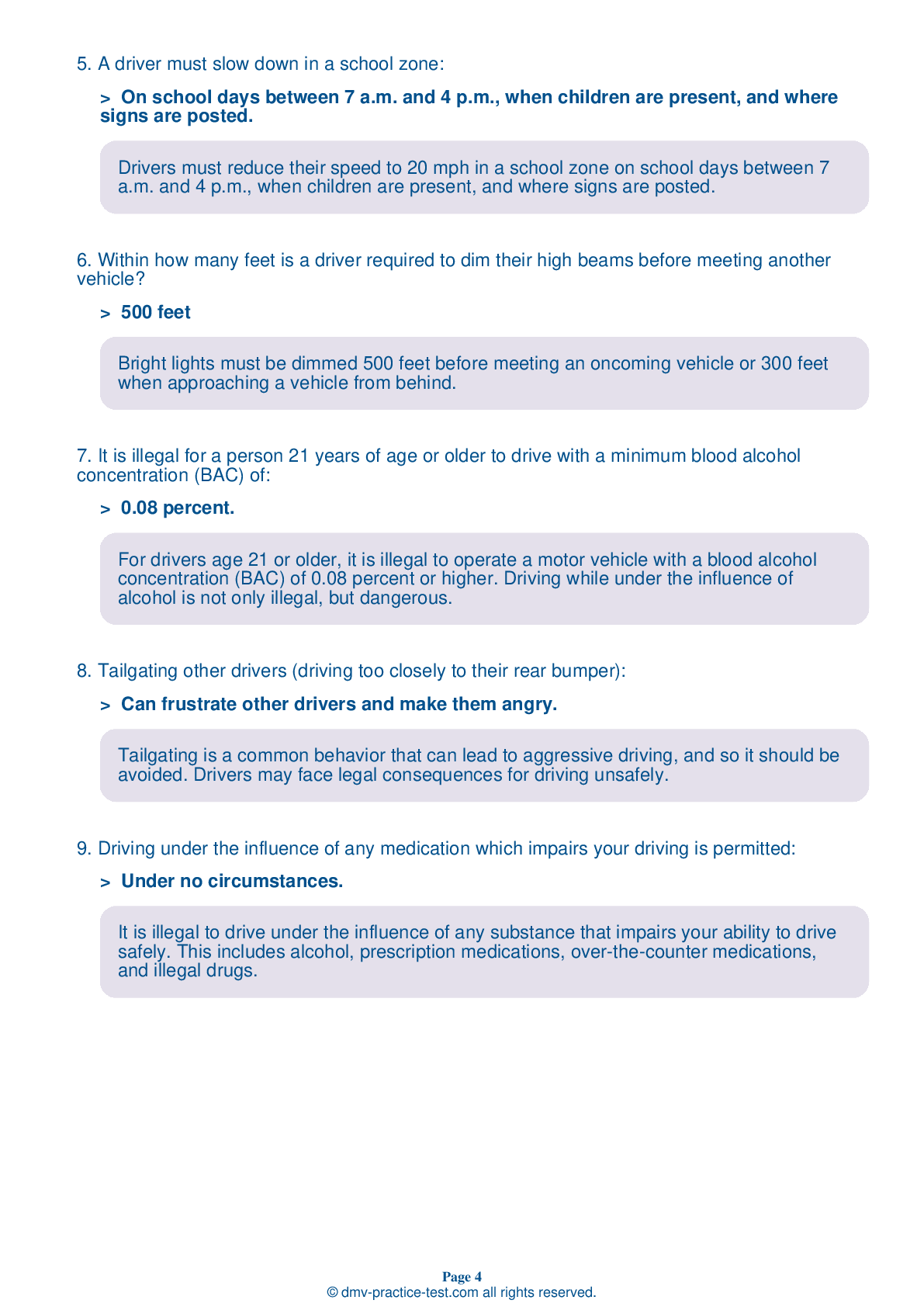FREE Illinois DMV Practice Test #8 Page 2 of 3
For January 2025, this set of Illinois DMV practise tests has been updated. It includes questions based on the most important traffic signs and rules for 2025 from the Illinois Driver Handbook. To study for the DMV driving permit test and driver's licence exam, use actual questions that are very similar (often identical!) to the DMV driving permit test and driver's licence exam.
Each question on the practise exam has a tip and explanation to help you recall the ideas. Questions about traffic rules, traffic signs, and driving statutes, as well as information from the Driver Handbook, will be included in the written portion of the official DMV test.
You must properly answer 38 of the 35 questions to receive a passing mark. To help you prepare for your Illinois instruction permit or driver's licence, take our DMV practise test.
The DMV exam is offered in a variety of languages.
Using any form of testing help will result in an automatic fail, and the DMV may take further action against your driver's licence, so avoid it.
13 . Stopping distances and severity of crashes:
Stopping distances are longer and crashes are more severe when traffic travels at higher speeds.
14 . This sign is a warning that you are approaching:
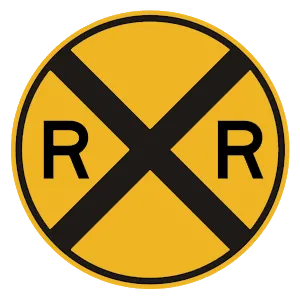
A round sign means you are approaching a railroad crossing. This sign is posted a few hundred feet in front of the tracks and tells drivers to slow down, look, listen, and prepare to stop.
15 . This sign means:
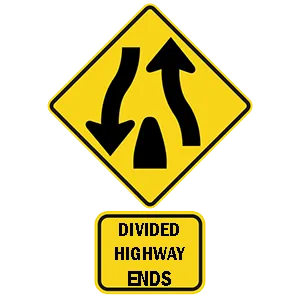
Warning signs are usually yellow with black markings. This sign warns that the divided highway ends ahead. Prepare to change lanes or shift lane position.
16 . In urban areas, drivers moving out of an alley, building, private road, or driveway do not need to come to a complete stop before entering the roadway if the roadway is clear of traffic.
When emerging from an alley, building, private road, or driveway, a driver must come to a complete stop and yield the right-of-way to other drivers and to pedestrians.
17 . This sign means:
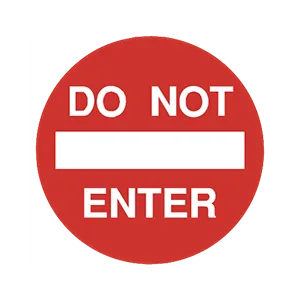
This sign is posted on one-way streets and other roadways where a driver is not allowed to enter. A driver may see this sign if attempting to enter an expressway ramp in the wrong direction.
18 . This sign shows one type of:
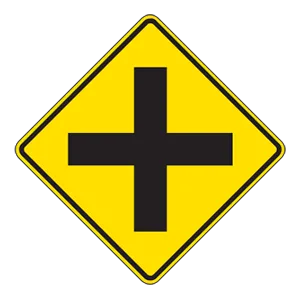
Warning signs are usually yellow with black markings. They alert you to conditions that are immediately ahead. This sign warns drivers that another road crosses the highway ahead.
19 . This sign means:

Warning signs are usually yellow with black markings. They alert you to conditions that are immediately ahead. This sign warns that you are leaving a separated one-way highway and will soon be driving on a two-way highway.
20 . If a traffic signal light is green and a police officer signals for you to stop, you should:
Drivers must obey any instructions given by a police officer, even if the instructions contradict laws, signs, signals, or markings that would otherwise apply.
21 . Unless authorized to do so, drivers may not break into the line of a funeral procession.
If you encounter a funeral procession, you must yield the right-of-way to all vehicles in the procession. You should not drive between vehicles in an organized funeral procession unless directed to do so by a law enforcement officer. It is illegal to join a funeral procession for the purpose of securing the right-of-way or attempting to pass any vehicle in an organized funeral procession, except where a passing lane has been specifically provided.
22 . A diamond-shaped sign means:

Diamond-shaped signs are used to warn drivers of special conditions or hazards ahead. They are typically yellow or orange in color.
23 . When approaching a railroad crossing that has no warning signals (such as electric flashing lights or gates), a driver should slow down, look, and listen.
If a railroad crossing has no warning devices or only a crossbuck sign, you should slow down, look in both directions of the track, and listen for a train or railroad equipment. Only proceed with caution across the tracks when it is safe to do so.
24 . What does this road sign mean?
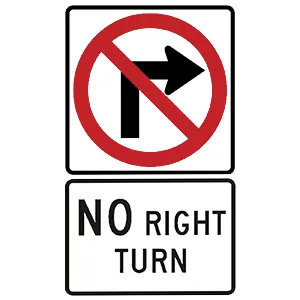
This sign prohibits right turns. It is illegal to turn right at an intersection where this sign is posted.
See the exact questions that will be on the 2025 Illinois DMV exam.
99.2% of people who use the cheat sheet pass the FIRST TIME
LT gives us an insight on how the cheat sheet provided her with all the study questions she needed before taking her test.
Joe initially studied with the handbook and failed his test, he eventually found us online, studied and pass his test the first time around.
